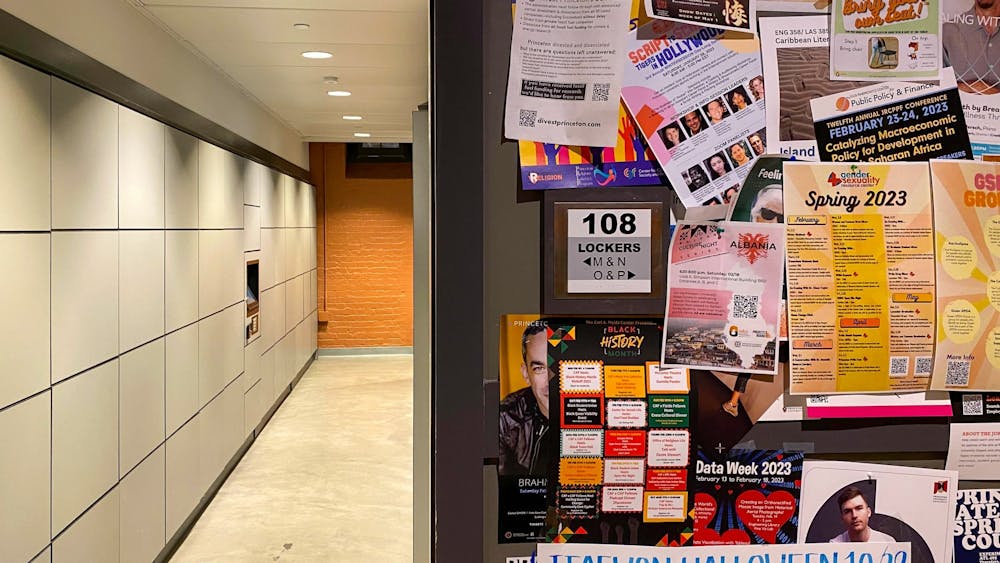From late August through September, the University processes roughly 20 percent of the packages they receive annually. The high demand challenges Campus Mail Services and causes delays in normal package processing times. This year, the demand coincided with system changes implemented over the summer intended to improve efficiency and ease of use.
A notice on the Campus Mail Services website states that “While the normal processing time is 24 hours or less, Mail services experiences extremely heavy package volume in the two weeks leading up to and after the Move-In period.”
Princeton has accommodated high demand by storing some packages at the Forrestal Campus.
The changes implemented over the summer consist of three modifications: Each student received a new Frist mailbox number, an updated software now sends delivery notifications from the address lockers@princeton.edu, and students must now collect letter mail from the Frist Package Room or the smart lockers located on the 100 level of Frist.
According to University spokesperson Michael Hotchkiss, the University deemed these changes necessary in order to accommodate expansion of the student body, as well as fluctuating demand: Over the last five years, mail deliveries have decreased by 4 percent while package deliveries have increased by 22 percent.
In the past two years, they have also added more temporary resources to deal with the increased demand during “peak periods” and expanded the number of package lockers.
“The changes have had no negative effect on our ability to receive or process mail, but upper-class students did experience a number of changes to processes they had become familiar with over the past few years,” Hotchkiss wrote in an email to The Daily Princetonian.
While the University maintains that system changes did not impede processing and total package volume remained consistent from the previous year, longer-than-usual delays certainly posed issues for students. Students who spoke to the ‘Prince’ expressed frustration with package wait times at the start of the semester.

“I do think processing times were quite slow, which is understandable,” Emmanuela Omole ’26 said. “In some situations I waited a week and a half or almost two weeks for my packages to arrive. But I know there is a larger volume of students and they just restructured this new system.”
For Vivian Loeffert ’27, extended package processing times hindered the adjustment to college life.
“As a freshman getting used to my new environment, it’s been stressful when it takes up to two weeks from the time I order something to when I am actually able to pick it up. Especially with balancing a busy schedule, there are so many things going on in my life and I’m also having to navigate delays with the mail system,” Loeffert said.
Loeffert added that school supplies she ordered on the first day of first-year orientation were not available for pickup until “four days after classes started.”

To circumvent these delays, some students have turned to using alternative shipping locations, such as package lockers in town or homes of nearby friends and family members.
“I have an aunt who lives in Princeton, about 10 minutes away from campus,” Muntara Singh ’27 said. “Having packages delivered to my aunt’s house is much more convenient. I would rather just have my aunt drop off my items on campus and not have to wait several days for the mail service to process my deliveries.”
However, mail carrier Aaron Fernando, who has worked at the University for three years, attested that changing the location of the mail and package rooms helped to mitigate stress during this period. He said this improvement has made the high demand in the first few weeks more “tolerable.”
This year, Campus Mail Services is storing packages remotely at the Princeton Forrestal Complex along Route 1 instead of directly at Frist to provide additional space. As needed, they send employees to collect packages about twice a day.
“We were always looking for extra places to keep these packages and one big change that’s really helped out is that we moved all our packages. It’s lifted a load off of us and helped us with space management a lot. We actually have room to walk around,” Fernando said.
In times of high demand, space for package storage is especially important.
“It’s more like a mental thing,” Fernando added. “We used to come in and see all these packages, and it was sort of mentally defeating and slightly overwhelming, at least personally for me. Now, [there’]s a buffer that makes things a little bit easier.”
In general, Fernando noted some confusion related to the changes made to the mail system, but said that the mail staff and students have generally adapted.
Hotchkiss attested that the University will use observations from this year to inform future improvements in the mail system. Specifically, he noted an increase in oversize packages such as linens, dorm furniture, mini-fridges, large screen televisions, bicycles, and scooters.
“To address this surge in package volume — and especially the increase in oversize packages that do not fit in lockers — we assigned more personnel, allocated more space, and modified our workflow to process and distribute items. Because we expect this trend to continue, we will be looking to allocate more resources on campus for package distribution,” he said.
He also mentioned that the University hopes more students will utilize Princeton Student Agencies for microfridges, dorm furnishings, moving, and storage more often in order to “save money, reduce waste, and support student ventures.”
Rebecca Cunningham is an assistant News editor for the ‘Prince.’
Ava Fonss is a contributing News editor for the ‘Prince.’
Please send corrections to corrections[at]dailyprincetonian.com.








